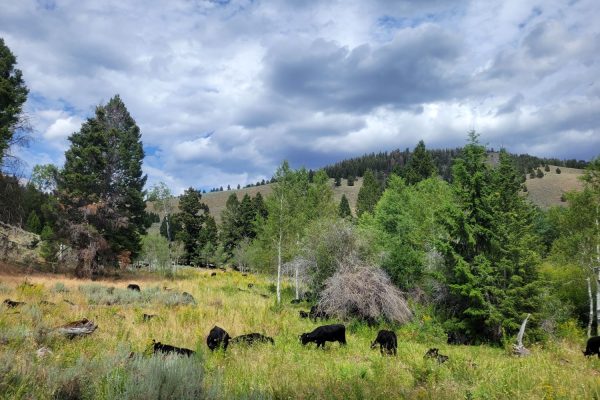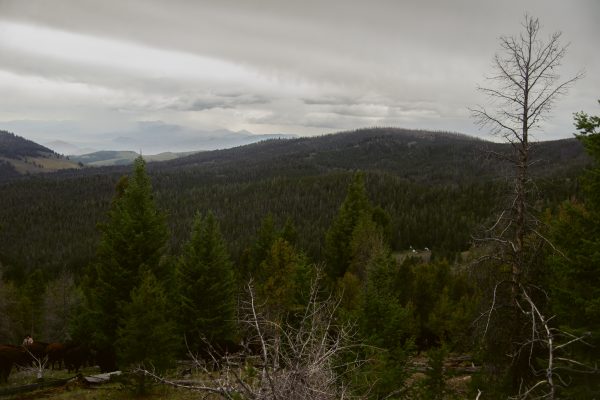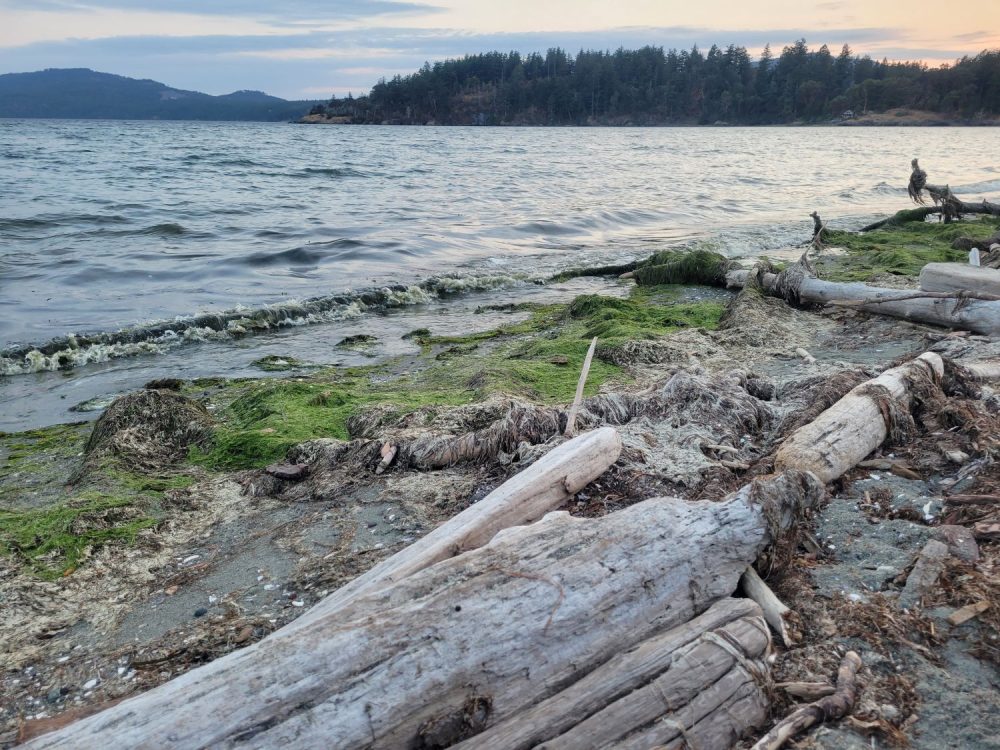It was a little after 5 am yesterday when I was startled awake by a blast of thunder reverberating up and down the canyon. Then the rain started in on my tent fly. It was time to get moving and check on the cattle. First, I checked on the horses in the makeshift corral we had built for them here at cow camp: they stood secure and uninterested in rain and lightning.
I wanted to make sure they were OK because the day before cowboys Jeremiah and Collin had to walk 8 miles (Jeremiah was barefoot from jumping right after them from his bedroll hoping for a quick catch) starting at 1:30 am when their horses broke out and tried to run the 12 miles back to the ranch. Jeremiah’s feet were sore from miles on rocky trails. It’s why cowboys often sleep with their boots on. Good thing they weren’t 25 miles away that they will be later this summer.
Josh, my cow camp partner, was already putting hot water on when I got up. The rain intensified, causing a pool on the rain tarp and leak on our camp kitchen (mud on our kitchen floor). He was back from his sleep spot, actually among the cattle on their bedding ground where he was on wolf alert. We have to keep a human with the beeves at all times to avoid confrontations with the powerful predators. A pack who set up den residence just 5 miles away has staked us and our cattle as part of their territory—and pantry. Our neighbors, just 2 miles to the south of us on their range, have already sustained calf losses from the wolves last week. Those folks aren’t camping with their cattle. We’re hoping this works.
We aren’t interested in a fight. We know the wolves do fear humans, and our scent is everywhere (we do drink a lot of Jeremiah’s cowboy coffee, after all). Our strategy is to relentlessly and fearlessly haze.

Our beeves are all young—adolescents—and are not range wise in the least. Some of them have lived on the range as young calves last year, but are unfamiliar with most of the plants, where to drink, rattlesnakes, and the host of predators that live there: wolves, lions and bears. That’s why we live with them, just like a parent going to midtown on the subway with their young teenager. That’s also why the full moon of the past few nights is a nightmare for us cowpokes craving the bedroll, and for our steeds who carry us. Those teenage beeves will roam and graze all night, given the daylight luminosity of the night, and we ride with them, keeping them in a dispersed herd as they drift silently through the moonlit ranges.
You will be eating the yield off their journey across the wild rangelands. And I think you’ll see why it has to be some of the most nutrient dense protein on earth, coming off young, mountain soils and robust native grasses.
Many folks compare our range to wet pastures in rainy country, and say, “look here—there is much more grass than you have. This production is good, right?”
It isn’t about production. Longer cells full of water do not mean more nutrition. I’ve sampled some of those wet pasture grasses, and they often taste like nothing. Or maybe a little like iceberg lettuce. I often sample our range grasses. They offer a cornucopia of flavors, like a great salad bar. Salty, sweet and almost savory is all there, and there are many species to choose from.
In one afternoon, I observed beeves eating Salmon River wildrye (grows only on ours and a few adjacent ranges and nowhere else on earth), bluebunch wheatgrass, Idaho fescue, cheatgrass, needle and thread, Indian ricegrass, buckwheat, prickly pear cactus, saltbrush, greasewood, several mustards, and numerous other forbs.
And the soils are so alive. I rolled some rocks over to our campfire and was startled by the sheer volume of bugs and soil dwellers that lived under them. Remember the relationship they have to our table: living soils mean nutrition density. Nutrition density means flavor choices for the beeve. Flavor in the steak means nutrition density consumed”¦by us.







Leave a Reply